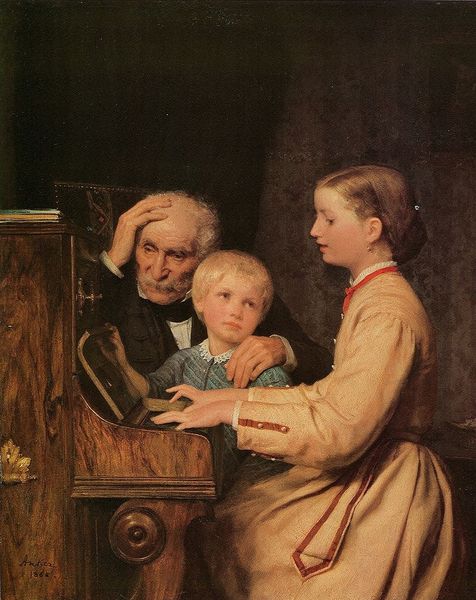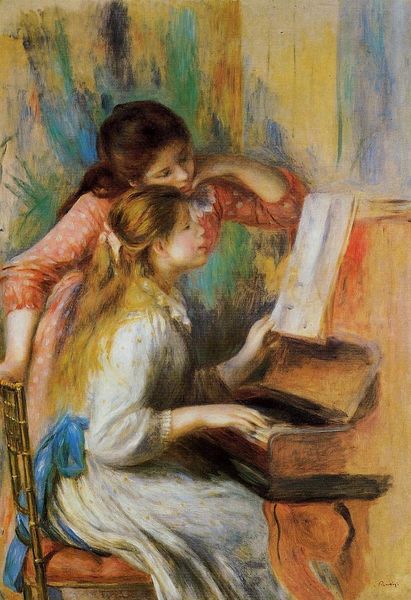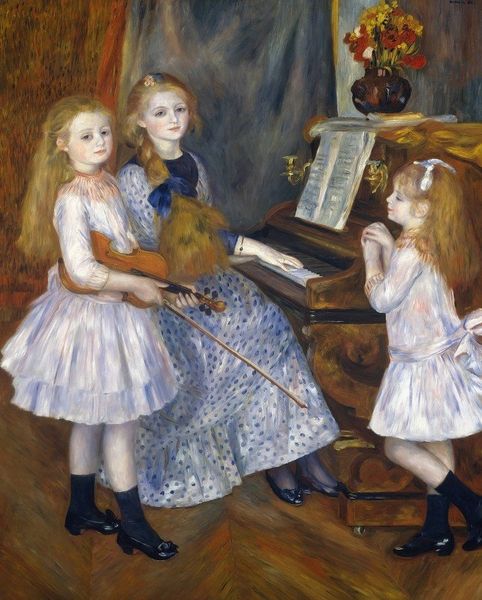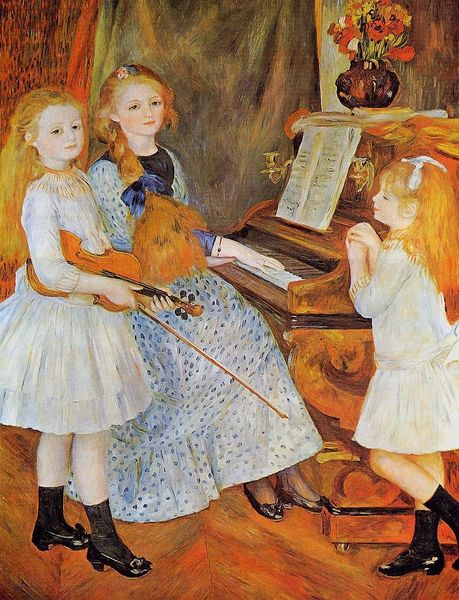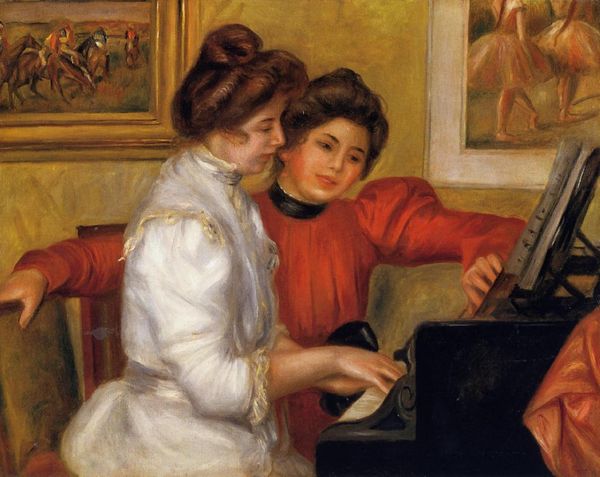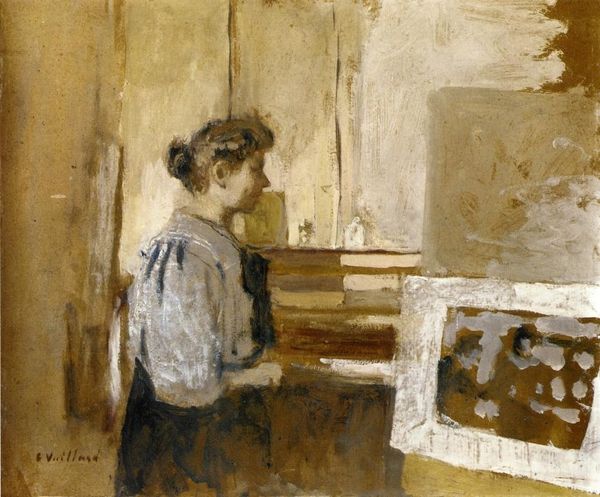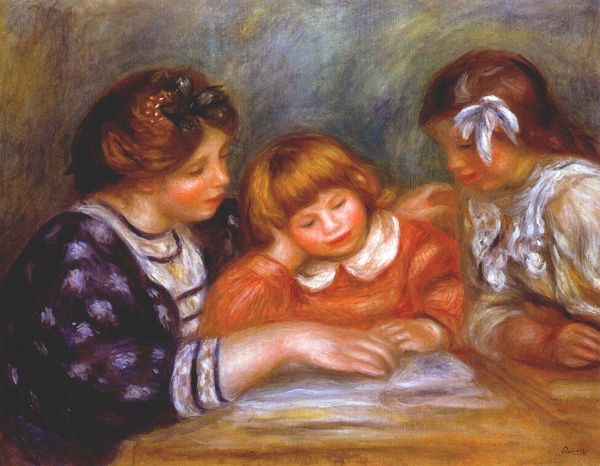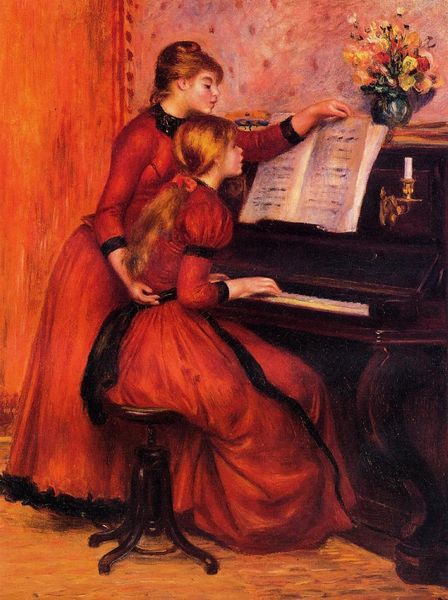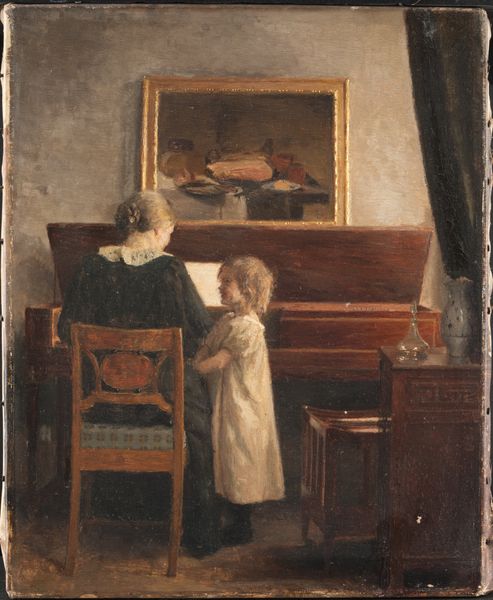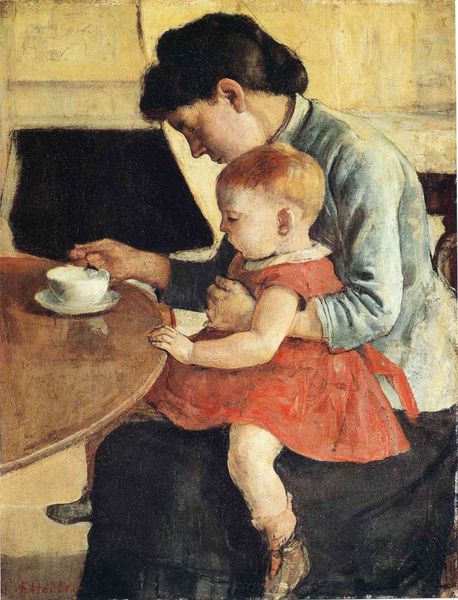
painting, oil-paint
#
portrait
#
painting
#
oil-paint
#
oil painting
#
group-portraits
#
romanticism
#
pre-raphaelites
#
academic-art
Copyright: Public domain
Curator: This oil painting is titled "Portrait Group Of The Artists Family," attributed to Edward Burne-Jones. Editor: It has a certain somber quality, doesn't it? The limited palette of browns and golds evokes a sense of introspection and quiet formality. The tight grouping of the subjects and the recessive background only augment that feeling of intimacy and containment. Curator: Yes, and consider that group portraiture was developing rapidly at this moment, gaining considerable popularity among the burgeoning middle classes who were emulating the practices of aristocratic circles in representing their growing place in society. The Burne-Jones' are positioning themselves quite deliberately here. Editor: From a purely compositional viewpoint, I'm struck by how Burne-Jones uses a limited range of tonal variation in color. Observe the soft modelling and gradations of tone to convey a melancholic tenderness and delicate light and shadow across the figures, who share similar bone structure and even skin pigmentation. He makes sure to subtly lead the viewers eyes throughout the composition, and make each subject stand out despite such homogeny. Curator: Precisely. We must acknowledge the social context. These portraits often aimed to project a specific image of familial harmony and prosperity. It’s crucial to think of the performative aspects of these artworks as status markers within the wider Victorian society. How did gender roles and social expectations influence this particular representation of family? Editor: Well, the slightly blurred rendering actually intensifies the emotional resonance. They almost feel idealized, but filtered through a gauze of nostalgia. Burne-Jones plays upon suggestion and implication rather than a literal description. The symbolism may not be overt, but it definitely seems purposeful. Curator: True. Given Burne-Jones' association with the Pre-Raphaelite movement, we must think how this intimate depiction challenged conventions, offering an alternative to both classical idealism and unflinching realism that were also en vogue. These portraits became vital records of evolving family dynamics during profound periods of industrial, social, and cultural change. Editor: It's amazing to witness Burne-Jones masterfully use color, form, and composition to draw us in and create that emotional connection, no matter its original intention or the evolving impact of family and history.
Comments
No comments
Be the first to comment and join the conversation on the ultimate creative platform.

